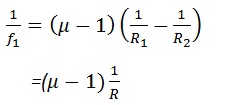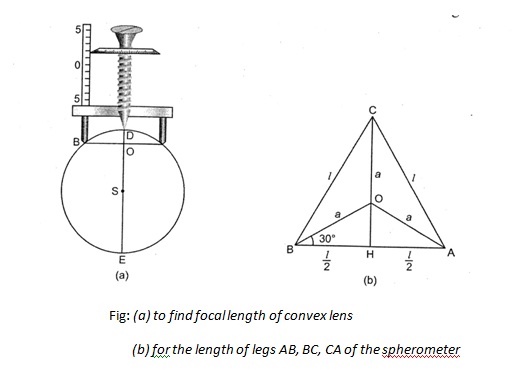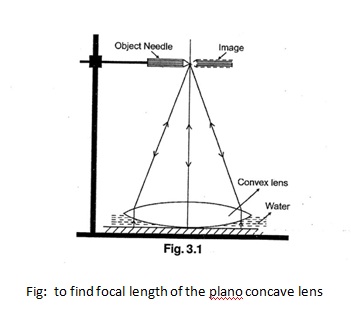





Published on Apr 02, 2024
To find Refractive Indices of Water And Turpentine Oil using a plane mirror, a equiconvex lens (made from a glass of known refractive index) and an adjustable object needle
A convex lens, an optical needle, a plane mirror, a clamp stand, a spherometer, a plumb line, metre scale, water and turpentine oil
Let's add small amount of water on a flat, plane surface and place a convex lens over it. This forms a plano-concave lens of water between the lower surface of convex lens and plane mirror.
Let f 1 and f 2 are the focal lengths of water lens and convex lens respectively, then focal length of the combination is:


The focal length of the plano-concave lens is, .(i)
From Lens Maker's formula,
=( 
R 1 = R and R 2 = for water lens.
The refractive index of water is , .(ii)

(where 'R' is the radius of curvature of the concave surfaces of the plano-concave lens).
The Radius of curvature of the lens, is
. (iii)
(iii)
• For finding the focal length of convex lens:
• Measure the rough focal length of the convex lens.
• Place the plane mirror with the convex lens placed on it above the horizontal base of a clamp stand horizontally as its tip lies vertically above the optical centre of the lens. Adjust the needle at a height a little more than the rough focal length of the convex lens.
• Try to remove the parallax between the tip of the object needle and its image tip.
• Note the distance of the tip of the needle from the centre of the upper surface of the lens. Let it be x 1. (Use plumb line).
• Remove the convex lens and measure the distance of the tip of the needle from the plane mirror. Let it be x 2 . (Use plumb line).
2 (vi) Repeat and record all the observations.
• For finding the focal length of the plano-concave lens:
Pour few drops of water over the plane mirror and place the convex lens over it. Repeat steps (ii) to (iv) as done above.Repeat the procedure with turpentine oil also.
• For finding 'l':
Determine the pitch and least count of scale of the spherometer. Place the spherometer on the dried surface of the convex lens. Turn the screw downwards very gently till the tip of the screw just touches the lens. Read and record the reading.
Keep the spherometer's legs on the base of a paper and adjusting the central screw, find the pricks A, B and C of the three legs of the spherometer. Join the centres of the three pricks and measure the lengths with the half-metre scale. Note the values of AB, BC and AC


Pitch of the spherometer= 1 cm
Least count of the spherometer = 0.01 cm
Distance between the legs:
• AB = 3 cm
• BC = 3 cm
CA = 3 cm